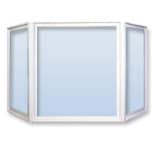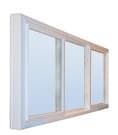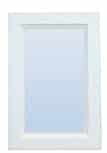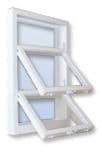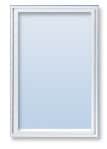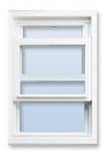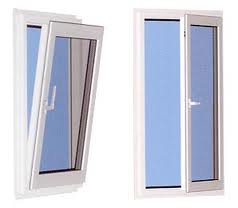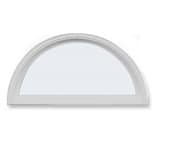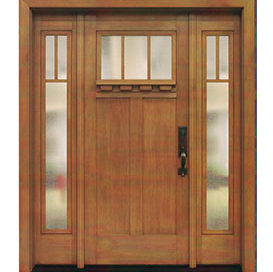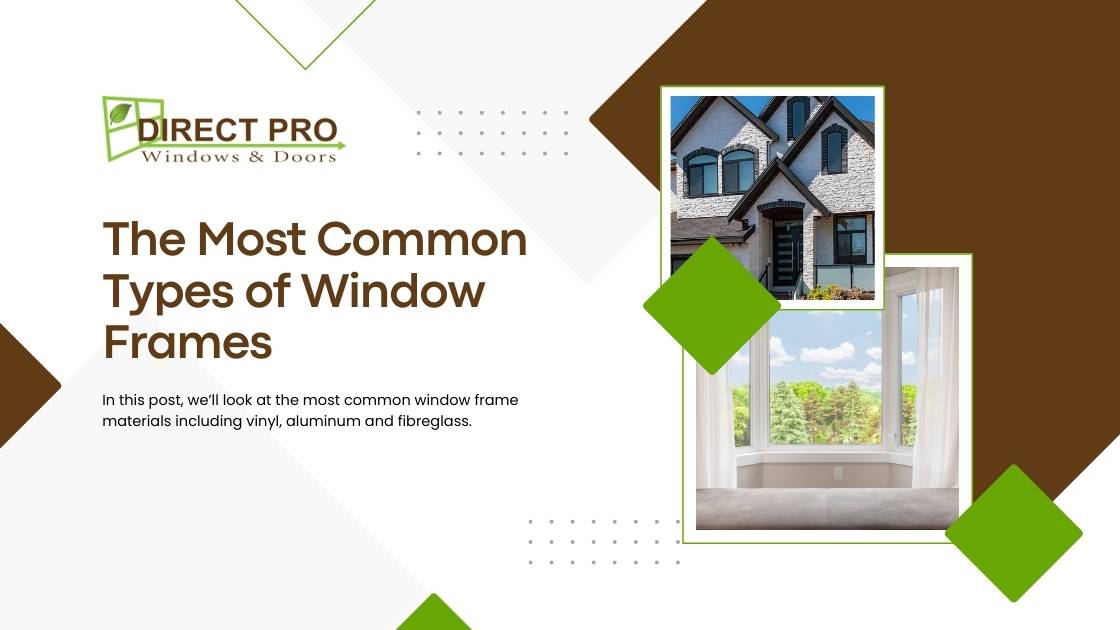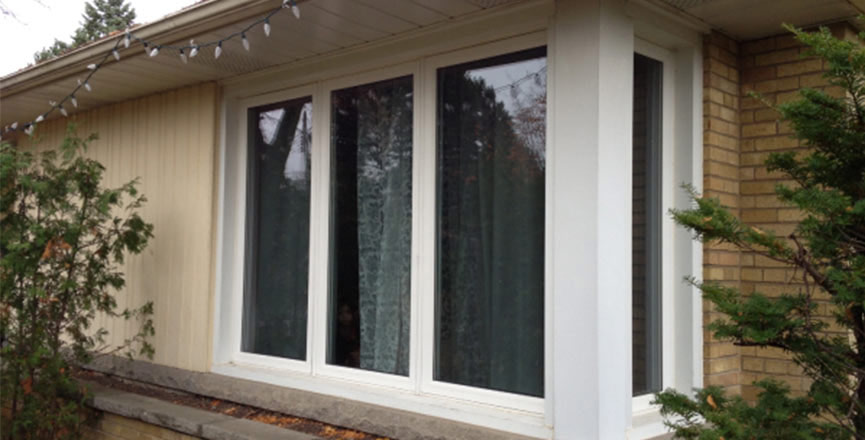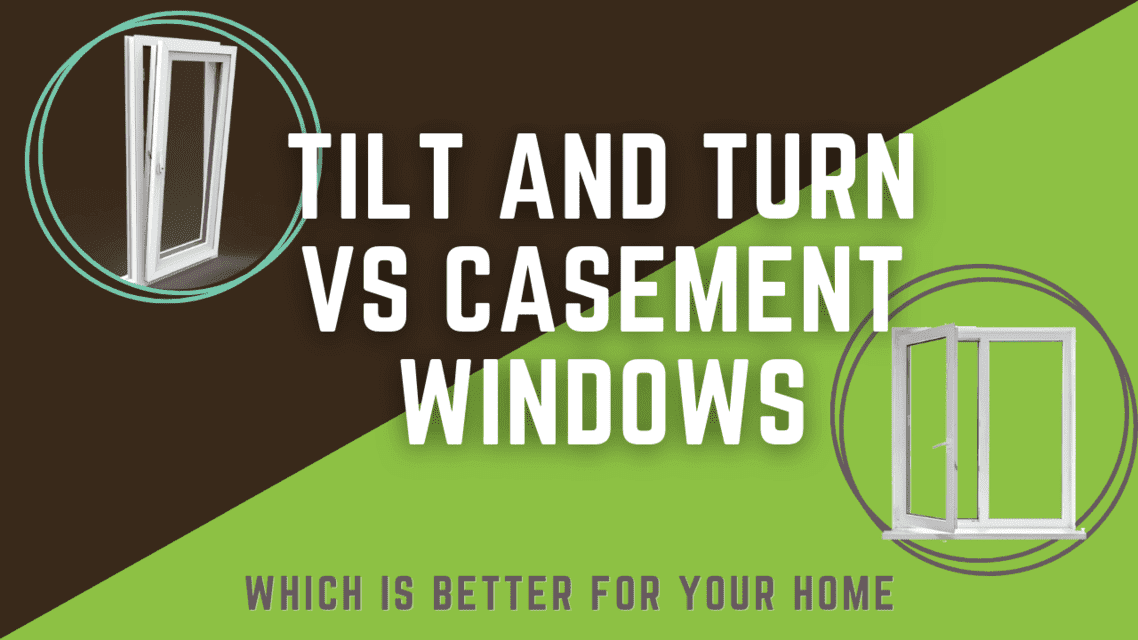
Tilt and Turn vs Casement Windows: Which Are Better
Whether looking at replacement windows or contemplating a window upgrade, you’ve likely encountered many different window types. Among the most popular are European-style tilt and turn and casement windows. Choosing the right windows can significantly impact your home’s aesthetics, energy efficiency, and functionality.
In this blog, we’ll look at the merits and drawbacks of tilt and turn and casement windows to help you make an informed decision for your living space. So, read on to explore tilt and turn windows versus casement windows.
Tilt and Turn Windows
While not a very common sight in North America yet, tilt-and-turn windows are quickly becoming popular, offering a duo of functionalities to cater to your specific needs. The “tilt” feature is your go-to for a breath of fresh air without fully committing to wide-open spaces. It’s like a courteous nod to ventilation, allowing the top of the window to tilt inward and welcome in a gentle breeze while maintaining security. This mode is convenient during those rainy days when you crave that earthy scent without turning your living room into a lake.
And then there is the “turn” mode, where these windows open wide. This inward-swinging action is reminiscent of a door, allowing plenty of fresh air into your home and making it easy to clean both sides of the glass without any acrobatics or precarious maneuvers. It also doubles as a quick and easy escape route during emergencies, adding a layer of practicality to your home.
Tilt-and-turn windows don’t just stop at functionality; they bring a sleek and modern aesthetic to the table. Their clean lines and unobtrusive design make them a favourite for contemporary homes. Plus, the versatility in ventilation options means you have control over the airflow, creating a comfortable and customized indoor environment.
Tilt-and-turn windows aren’t without some downsides. The potential drawback comes from a slightly steeper initial cost than traditional window styles. Their intricate design and multifunctionality may also require professional installation, which could add to the overall investment. However, for those valuing style, functionality, and a touch of European flair, tilt-and-turn windows might just be the home improvement you’ve been searching for.
 Casement Windows
Casement Windows
Casement windows are simple yet effective. Hinged on one side, these windows swing outward like a door, providing a wide, unobstructed opening for maximum ventilation. Their single-panel design allows for a sleek and contemporary look, making them a popular choice for those seeking both form and function.
Casement windows are excellent at catching those cross-breezes, ushering a refreshing airflow into your living space. The wide opening also offers unobstructed views, allowing you to showcase your picturesque surroundings. Cleaning is a breeze as the entire window swings open, granting easy access to both sides of the glass. Plus, when closed, their snug fit provides excellent energy efficiency, keeping your home cozy and well-insulated.
While providing expansive views, casement windows can be intrusive in tight spaces where the outward swing might pose challenges. Their classic design may also be less suitable for a more minimalist or modern aesthetic. Additionally, the hinge mechanism, while sturdy, may require occasional maintenance to ensure smooth operation over time.
In the grand scheme of window choices, casement windows are elegant and blend style and utility seamlessly. Whether savouring a gentle breeze or framing the outside world, casement windows are here to give you both.
Tilt and Turn vs Casement Windows: The Differences
Regarding Tilt and Turn vs. Casement Windows, the choice ultimately boils down to your specific preferences, needs, and the architectural nuances of your home. Let’s break down the differences between these two window styles to help you make a well-informed decision:
Operation Mechanism
Tilt and turn windows are a Swiss Army knife of functionality. They operate on a dual hinge system that allows for two primary modes. The “tilt” position enables the top of the window to tilt inward, providing controlled ventilation without fully opening the window. The “turn” function allows the window to swing inward like a door, facilitating easy cleaning and emergency exits.
Casement windows are hinged on one side and open outward like a door. The entire window panel swings open to create a wide opening for optimal ventilation. This single-panel design gives them a distinct look and allows for unobstructed views when the window is open.
Aesthetic Appeal
Known for their sleek and modern design, tilt-and-turn windows are often favoured in contemporary and minimalist home styles. They offer clean lines and a versatile appearance that complements modern architecture.
On the other hand, casement windows exude classic elegance. Their timeless design fits well with traditional and transitional home styles. The single-panel simplicity of casement windows adds a touch of sophistication to the overall aesthetic.
Ventilation Control
Tilt and turn windows provide versatile ventilation options. In the “tilt” position, you can enjoy a gentle breeze without compromising security. In the “turn” position, you can create a wide opening for maximum airflow.
Casement windows excel in capturing cross-breezes. The outward swing of the entire panel allows for efficient ventilation, making them an excellent choice for areas with abundant natural airflow.
Space Considerations
The inward tilt function of tilt and turn windows is space-efficient and suitable for areas with limited exterior space. The inward swing in the “turn” position may be advantageous for easy cleaning but requires space inside the room.
The outward swing of casement windows might be less ideal for tight spaces or areas with obstructions outside. Consider the available exterior space when opting for casement windows. But on the other side, you don’t have to worry about interior space to open the window.
Maintenance and Cost
The multifunctionality and intricate design of tilt and turn windows may require professional installation, potentially impacting the upfront cost. Regular maintenance ensures smooth operation over time.
Casement windows are relatively straightforward in design, potentially leading to lower installation costs. The hinge mechanism, while robust, may need occasional maintenance for optimal performance.
Cleaning
With their tilt function, tilt and turn windows make cleaning a breeze. Accessing both sides of the glass from the inside simplifies maintenance tasks.
Cleaning Casement windows is a straightforward affair. The entire window swings open, allowing easy access for cleaning both sides.
Energy Efficiency
Closed Tilt and Turn windows provide a tight seal, offering excellent energy efficiency. The snug fit helps maintain a comfortable indoor temperature, reducing energy costs in the long run.
Casement windows create a solid seal when closed, contributing to energy efficiency. The snug fit prevents drafts and enhances insulation, making them a good choice for those who prioritize sustainability.
Conclusion
When looking at tilt and turn vs. casement windows, the choice comes down to your unique needs and style preferences. Tilt-and-turn windows showcase a sleek, modern design, ideal for those craving European sophistication and space-saving functionality. On the flip side, casement windows exude timeless elegance with their classic single-panel design, catering to lovers of traditional aesthetics and optimal ventilation seekers.
Whether you prioritize controlled airflow, aesthetic appeal, space considerations, low-maintenance living, or energy efficiency, each window type has strengths and quirks. It’s a personalized journey of finding the window superhero that aligns with your home’s character.
If you are looking for professional advice and installation, look no further than Direct Pro Windows & Doors. We offer European-style tilt-and-turn windows as well as traditional styles of glazed windows. With over a decade of experience in the business, we are committed to providing excellent products and services from start to finish. We believe in quality, value, and materials that will last and enhance Canadian home security. Our products, materials, and workmanship are of the highest quality, and every door and window we install are built to exact standards. Direct Pro Windows & Doors also offers an industry-leading warranty on all our products and services.
Call Direct Pro Windows and Doors at 1-888-636-3350 or fill out our convenient online form for a quote or advice on windows and doors sales & installation in Toronto and GTA.



